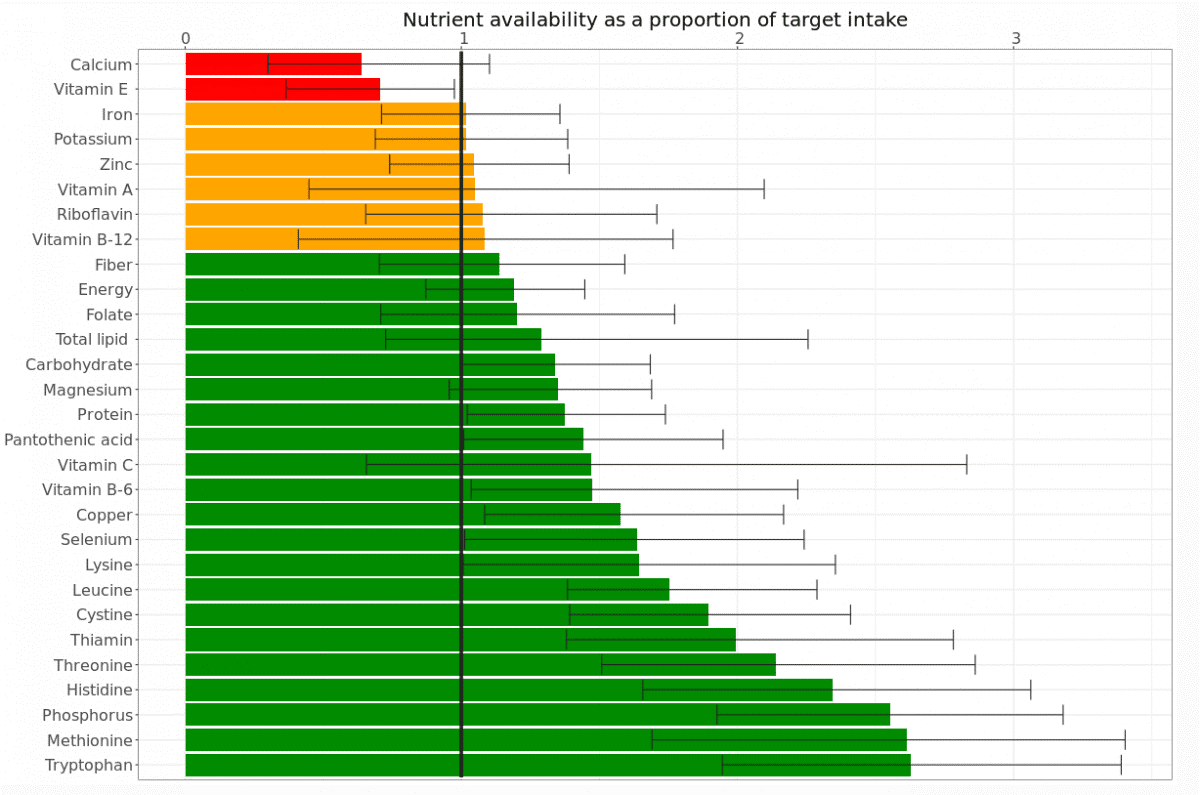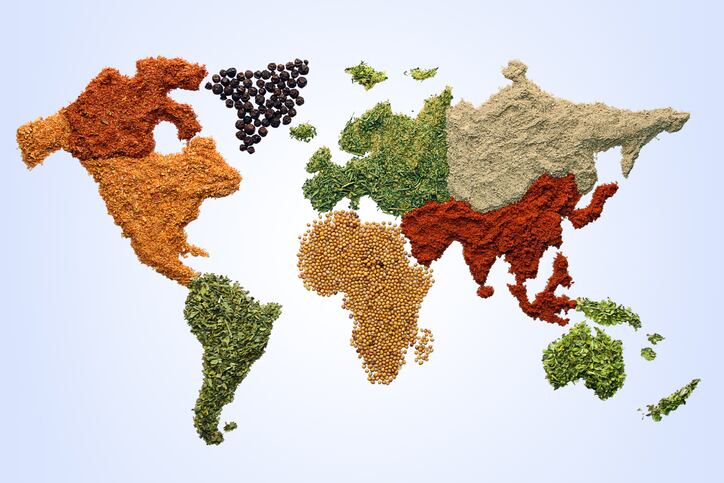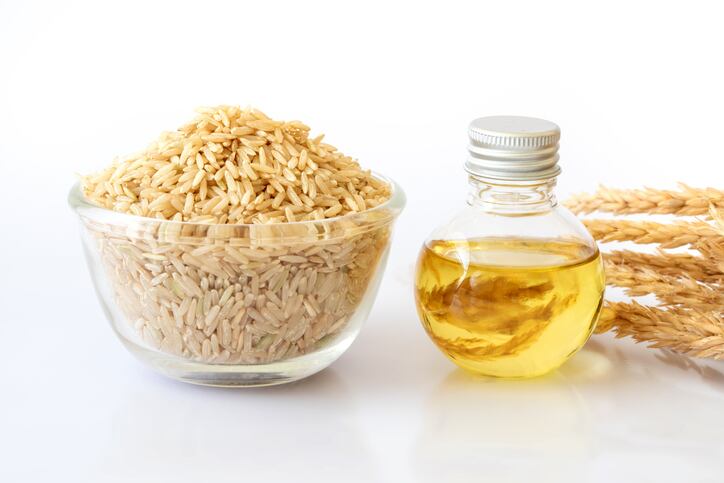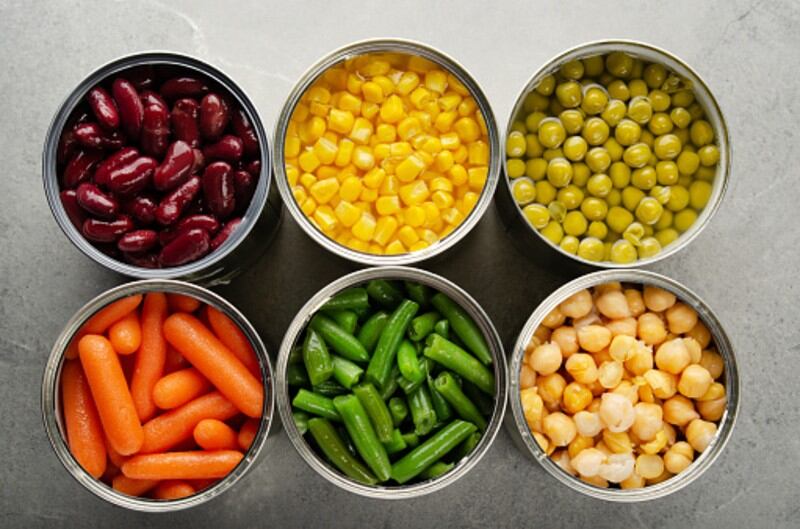The DELTA model was first launched in 2020, by the Sustainable Nutrition Initiative hosted by Riddet Institute in New Zealand.
It is a global food system mass balance that uses information from FAO, USDA and EFSA about current food production to predict nutrition available to the average global citizen both now and in the future. It also takes into account the degree of food waste and shows the impact of these changes on human nutrition.
The upgraded 1.3 version was launched in May 2021, with the addition of nutrient availability at a national, sub-regional and regional level, as well as domestic production of 29 nutrients, import and export dynamics, and shows how availability differs in different parts of the world.
Nutrient availability
This latest model presents a chart on 29 nutrients and each nutrient is coloured green (substantially above), amber (slightly above) and red (below) in terms of meeting the global average nutrient availability.
The chart also shows the 10th and 90th percentiles of each nutrient, which shows the range of availability in different countries.

One key finding from the model showed how although nutrients like fibre, energy, folate, lipids and vitamin C (coloured green) met the global average nutrient availability, availability still fell below requirements for the lowest 10th percentile.
Other nutrients of concern (coloured amber) include iron, potassium, zinc, vitamin A, B12, and riboflavin, all of which just met the global average availability. These also had the 10th percentile below the average requirements.
Dr Nick Smith, from the Riddet Institute, said:“There are a great many factors that contribute to the variation in nutrient and food availability in different parts of the world: climatic, political, economic, etc. In general, developed nations have greater nutrient availability than developing nations.”
Nutrients (coloured red) which did not meet global average nutrient availability were calcium and vitamin E.
For calcium, dairy and certain vegetable products are the greatest contributors to availability according to Smith.
“Consumption of these foods is not uniform around the world, and in many cases is suboptimal, contributing to the deficit.”
For Vitamin E, the major source is oil crops, but less is known about the absolute bodily requirements for this nutrient. “More research is needed to establish whether current intake targets set by government bodies accurately reflect requirement.”
It was interesting to note for vitamin E, even the 90th percentile availability is below the requirement, while calcium’s 90th percentile is above requirements, showing the great variation between countries.
Other nutrients (coloured green) such as copper, protein, leucine, phosphorus and thiamin met the global average nutrient availability even within the 10th percentile.
“A result that surprises many is that protein and the indispensable amino acids are supplied at a sufficient level, with even the 10th percentile availability of protein meeting requirement. This suggests that widespread protein malnutrition is more an issue of poor distribution and access than insufficient production,” Smith said.
Food waste
Another important finding in the model was how reducing food waste had differing impacts on the availability of different nutrient.
For example, halving food waste greatly increases dietary energy availability, but makes only a minor difference to calcium and Vitamin E availability.
“This is because we waste more energy dense foods (e.g. grains) than calcium and Vitamin E dense foods such as dairy and vegetable oils,” Smith said.
Upgrades
The model was designed to educate and inform the sustainable food system debate, rather than devise the best way forward.
The main users of the model were academics using it for research, but increasingly more policy and industry users, according to Smith.
“What we would like these stakeholders to take away are the insights of the model and the ability to test their assumptions and future thinking from a nutritional perspective.”
The model covers 175 countries, with data obtained from the FAO record food balance sheet. Most of this used data from 1998 to 2018.
Smith said a DELTA 2.0 version is being planned.
“This will include the land use requirements of user-input scenarios, including the variability in current land use yields. The intention is to give users the dual view of the changes to production necessary to resolve nutrient gaps, as well as the changes to land use that this may incur. After that, we will be looking to include further environmental aspects.”




